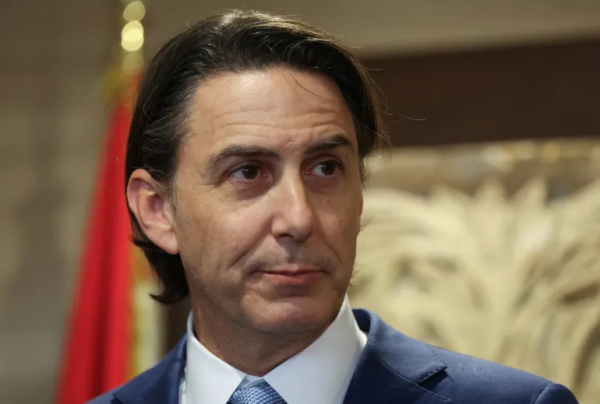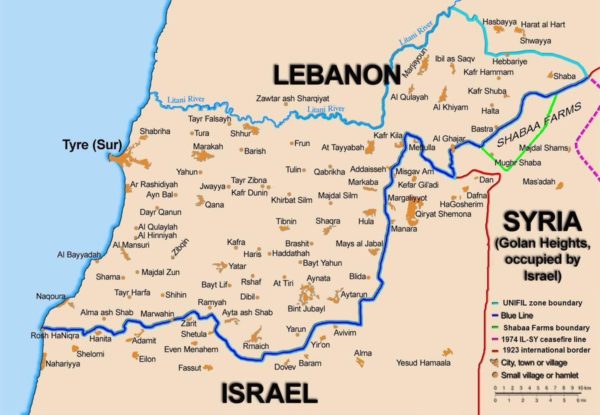An American-led diplomatic initiative to separate their forces at the border appears to be falling short, and time is running out.
Nine months into the Israel-Hamas war in Gaza, the mid-intensity conflict between Israel and the Iran-backed Lebanese Shiite militia Hezbollah is escalating. Israel is killing senior Hezbollah military commanders with greater frequency; Hezbollah is launching salvos progressively further south across the border. The rhetoric is intensifying as well. Last week, Hezbollah leader Hassan Nasrallah warned that “Israel should be afraid.” In the event of a war, he said, “no place will be safe from our missiles and drones.” Meanwhile, Israeli Minister of Defence Yoav Gallant is warning of a conflict on a “different scale” against Hezbollah.
While both Israel and Hezbollah prefer to defer—if not avoid—what would be an extremely lethal and costly conflagration, another war seems increasingly inevitable. Since Hamas’s 7 October attack and the subsequent mobilisation of Iran’s regional proxies against Israel, Washington has been narrowly focused on de-escalation and on preventing a deepening and broadening of the conflict. Notwithstanding significant diplomatic efforts, however, the Biden administration appears to be falling short, and time is running out to forestall a deterioration.
Its strategy to prevent this war is a diplomatic initiative led by US envoy Amos Hochstein to separate Israeli and Hezbollah “Radwan” special forces. After 7 October, Israel evacuated some 70,000 citizens from its northern border region, fearing these Radwan forces might take a page from Hamas’s playbook and cross the frontier to kidnap Israelis. Indeed, Hamas appears to have stolen a page from Hezbollah’s own war plan. Recall in 2018, Israel discovered and publicly uncovered four Hezbollah cross-border attack tunnels. At the time, Israeli Premier Benjamin Netanyahu suggested these passageways would have been used by the group to kidnap Israelis.
No wonder, then, that in order for this population to return, Israel says the status quo along the border needs to change either through diplomacy or by force of arms. Israel is committed to the establishment of a Hezbollah-free buffer zone along its northern frontier in south Lebanon.
Modifying UNSC Resolution 1701

Hochstein’s proposed solution is to resuscitate and implement a modified version of United Nations Security Council Resolution 1701, the resolution that effectively ended the 2006 Israel-Hezbollah war. Among other things, UNSCR 1701 was supposed to prevent Hezbollah from deploying south of the Litani River along the border with Israel after the end of the hostilities. But the United Nations Interim Force in Lebanon, or UNIFIL, lacked both the ability and the will to stop Hezbollah from reestablishing itself on the frontier.
Now, Hochstein seeks to broker a ceasefire deal that will relocate Hezbollah forces approximately 7 kilometres north of the border—roughly to the Litani River—and deploy several thousand Lebanese Armed Forces soldiers in their place. Concurrently, according to the plan, Israel would end its manned and unmanned overflights of Lebanon, and Israel and Lebanon would commence discussions on disputed border points along the so-called Blue Line, potentially leading to the reunification in Lebanon’s favour of the contested town of Ghadjar. Finally, per Hochstein’s proposal, UNIFIL’s 13,000 deployed troops in South Lebanon—already the most peacekeepers per kilometre in the world—would be augmented with additional observers, perhaps from Germany, to better monitor and more accurately report on Hezbollah’s efforts to cheat, i.e., to redeploy its forces in prohibited areas.
The arrangement, if agreed, would satisfy Israel’s requirement of pushing Radwan forces back, enabling residents of the north to at least temporarily return home. Even if—as many predict—the agreement doesn’t last, it would provide the Israeli army with a much-needed respite before the next war. At the same time, it would ostensibly provide Hezbollah with a “win”—the liberation of more Lebanese territory as the result of military actions against Israel. The organization would no doubt proclaim this outcome to constitute a second “divine victory” as it did after the 2006 war.
Despite the ostensible benefits to both sides, however, Hochstein’s initiative doesn’t appear to be gaining traction. Timing is a big part of the problem. Hezbollah doesn’t want a full-scale war but is committed to continuing its performative resistance campaign against Israel until a formal Israel-Hamas ceasefire is reached. That truce, which at a minimum entails a return of the Israeli hostages and a cessation of hostilities, has proved elusive and remains a distant prospect at best. Meanwhile, the Government of Israel is under increasing pressure at home to return its citizens to the north in time for the start of the 2024 school year in late September.
In the absence of a Gaza ceasefire and as September fast approaches, Israel is escalating in Lebanon. Senior and other prominent Hezbollah commanders are being killed on an almost daily basis. Hezbollah, too, is pushing the envelope, recently flying reconnaissance drones over Haifa and targeting Israeli towns as far south as in the lower Galilee.
Yet, a war could still be avoided. Israel is reportedly in the final stages of its military campaign in Rafah, and it’s expected that it will declare an end to “major combat operations” in the coming weeks. Absent a formal ceasefire between Israel and Hamas, though, it is unlikely Hezbollah will fully desist, especially if, as expected, Israel continues to “mow the grass” in Gaza, periodically targeting re-emergent Hamas formations.
Hezbollah in No Hurry
Notwithstanding the loss of nearly 400 operatives and the continued displacement of some 70,000 of its Shiite constituents from south Lebanon, Hezbollah seems relatively comfortable with the current situation and in no hurry to make concessions. It is the Israeli government that is under pressure to change the status quo in south Lebanon and facilitate the safe return of its citizens to the north. An end to the shooting will be insufficient, and ultimately, this is what may prompt Israel to intensify its operations against Hezbollah. As Hezbollah continues to fire deeper into Israel, the chance for a mass civilian casualty incident increases, another potential spark for a war.
The Israeli army is under no illusions as to what war with Hezbollah means. It could prove the most costly, in terms of military and civilian casualties as well as damage to infrastructure, in Israel’s history. (In addition to fighting Hezbollah, Israel might also find itself at war with Iran). And the price for Lebanon promises to be even higher.
US diplomacy may eventually succeed in brokering an understanding, like the deal reached by then Secretary of State Warren Christopher in 1996 after Israel’s “Grapes of Wrath” operation against Hezbollah. Any arrangement, however, is likely to be short-lived. After 7 October, the subsequent unremitting onslaught by Iran’s regional proxies in Yemen and Iraq, and the unprecedented 13 April missile attack by Iran, Israel is by necessity going to be more proactive in countering its proximate threats.
Regrettably, an end to the war in Gaza won’t mitigate the threat posed by Hezbollah. While a war between Israel and Hezbollah might be deferred, a full-scale conflagration may be unavoidable.
David Schenker is the Taube Senior Fellow at The Washington Institute and director of its Rubin Program on Arab Politics. This article was originally published on Al Majalla’s website.
THE WASHINGTON INSTITUTE


Leave a Reply
You must be logged in to post a comment.